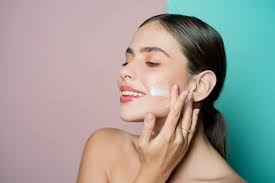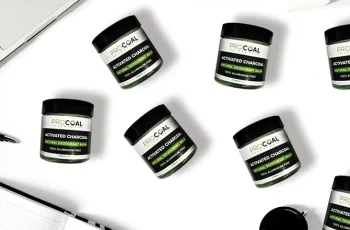
Can Azelaic Acid and Vitamin C Be Used Together?
The Truth About Layering These Powerful Skincare Ingredients
In the world of skincare, some ingredients are so effective that it’s tempting to want them all in your routine. Azelaic acid and vitamin C are two of those powerhouse actives.
Both offer significant skin benefits. And both are loved by dermatologists and skincare enthusiasts alike. But can you safely use them together?
Let’s explore the science behind these ingredients, how they work, and how to combine them effectively — without risking irritation.
Why Combine Azelaic Acid and Vitamin C?
Azelaic acid and vitamin C each offer their own set of benefits. They target similar concerns in different ways, which makes combining them appealing.
They both:
Target hyperpigmentation, Help brighten skin tone, Reduce inflammation, Support a more even complexion
Together, they create a dynamic duo that addresses discoloration, acne, dullness, and environmental damage — all without resorting to harsh treatments.
But combining potent actives can be tricky. It’s important to know how each ingredient works and how your skin responds before layering.
What Does Azelaic Acid Do?
Azelaic acid is a dicarboxylic acid derived from grains like barley, wheat, and rye. It’s most often used in prescription-strength treatments for acne and rosacea.
Key Benefits of Azelaic Acid:
Gently exfoliates dead skin cells
Unclogs pores and removes excess oil
Reduces acne-causing bacteria on the skin
Fades dark spots and melasma
Soothes redness and inflammation
Safe for most skin types, including sensitive and rosacea-prone skin
Its mild exfoliating action makes it ideal for people who find stronger acids or retinoids too irritating.
What Does Vitamin C Do?
Vitamin C, most often in the form of ascorbic acid, is a potent antioxidant with skin-transforming benefits. It’s one of the most studied ingredients in skincare.
Key Benefits of Vitamin C:
Fights free radicals from pollution and UV damage
Boosts collagen production to firm and plump the skin
Brightens dull or uneven tone
Fades hyperpigmentation and sun spots
Minimizes signs of inflammation like redness or blotchiness
It’s a go-to for those seeking radiant, smooth, and youthful-looking skin.
Can You Use Azelaic Acid and Vitamin C Together?
Yes, you can safely use azelaic acid and vitamin C together. In fact, they make a great team when used correctly.
Vitamin C protects the skin during the day from environmental stressors. Azelaic acid works gently to exfoliate and treat issues like pigmentation and acne.
Used together, they deliver visible improvement in skin tone, clarity, and texture — with minimal risk of irritation for most people.
However, proper timing and product layering are crucial to avoid overstimulating the skin.
Which Should You Apply First?
If you’re layering both in one routine, apply vitamin C first, then follow with azelaic acid.
Vitamin C, especially in serum form, should be used on clean skin to maximize absorption. After it absorbs (typically after 10 minutes), you can follow with azelaic acid.
Suggested Routine:
Morning:
Cleanser, Vitamin C serum, Azelaic acid (if in a lightweight formula), Moisturizer, SPF 30 or higher
Evening:
Cleanser, Azelaic acid, Moisturizer
You can also split them into different routines — vitamin C in the morning, azelaic acid at night. This reduces the risk of irritation while still delivering full benefits.
Can You Use Moisturizer After Azelaic Acid?
Absolutely — and you should. Moisturizer helps to lock in hydration and soothe any potential irritation caused by exfoliating acids like azelaic.
Apply moisturizer as the final step in your routine (or before sunscreen in the morning). Look for formulas with calming ingredients like:
Ceramides, Glycerin, Hyaluronic acid, Niacinamide
These ingredients support a strong skin barrier and help balance out active treatments.
Does Azelaic Acid Damage the Skin Barrier?
When used correctly, azelaic acid does not damage the skin barrier. However, like all exfoliants, it can cause dryness or sensitivity if overused.
Azelaic acid gently dissolves the glue between dead skin cells, revealing brighter skin. But this exfoliation can thin the skin’s outermost layer if not balanced with hydration.
To Protect Your Barrier:
Don’t combine azelaic acid with too many other actives
Always moisturize afterward
Use SPF daily
Consider pairing it with niacinamide or hyaluronic acid to boost hydration and calm inflammation
If your skin feels tight, flaky, or itchy, it may be time to reduce how often you use it.
Should You Use Azelaic Acid or Vitamin C?
It depends on your skin goals. Here’s a quick guide:
Concern Best Ingredient
Dark spots Both work well together
Redness or rosacea Azelaic acid
Dull, tired skin Vitamin C
Anti-aging/fine lines Vitamin C (for collagen support)
Acne Azelaic acid
You don’t have to choose one over the other. In many routines, they work best together or when used at different times of day.
How to Use Azelaic Acid on Your Face
Azelaic acid is often found in prescription creams, but it’s also available in over-the-counter products like:
Serums, Spot treatments, Cleansers, Gels
To use:
Cleanse and pat dry your skin
Apply a pea-sized amount to affected areas
Gently massage into skin
Follow with moisturizer (and SPF if it’s daytime)
Some products are rinse-off, like cleansers, while others are meant to stay on the skin. Always follow the instructions on your product.
Does Azelaic Acid Help With Wrinkles?
Azelaic acid isn’t considered an anti-aging ingredient in the traditional sense. It doesn’t stimulate collagen or smooth fine lines like retinoids or peptides.
However, by fading hyperpigmentation and improving skin clarity, it gives the skin a more youthful appearance. This brightening effect can make skin look smoother and more even.
If your main concern is wrinkles or sagging skin, vitamin C is a better bet — especially when combined with other proven anti-aging ingredients.
Who Should Avoid This Duo?
Both ingredients are generally well-tolerated, but caution is advised if:
You have extremely sensitive or reactive skin
You’re already using strong actives like retinoids or AHAs
You’ve recently had chemical peels or laser treatments
If you’re new to either ingredient, introduce them one at a time. Start with once every other day, then increase based on how your skin responds.
Always perform a patch test first when trying new products or combinations.
Final Tips for Success
To safely combine azelaic acid and vitamin C in your skincare routine:
Introduce slowly and monitor your skin’s response
Apply vitamin C first, then azelaic acid
Use hydrating and barrier-supportive products
Wear sunscreen every single day
Avoid using with retinol, glycolic acid, or other harsh actives unless advised by a dermatologist
These two ingredients work best when they’re part of a thoughtful, well-balanced routine — not when thrown together haphazardly.
Final Thoughts
Azelaic acid and vitamin C are both game-changing skincare ingredients. Used together, they can transform your skin — brightening tone, clearing blemishes, and reducing pigmentation.
But as with any powerful combo, success depends on proper use. Take your time, go slow, and build a routine that puts your skin’s health first.
When in doubt, speak to a dermatologist. They can guide you on what works best for your specific skin type and concerns.


